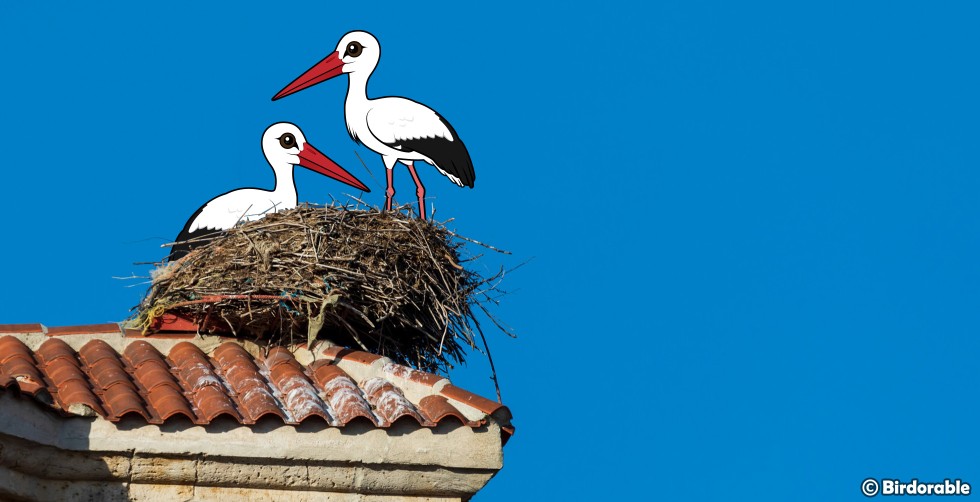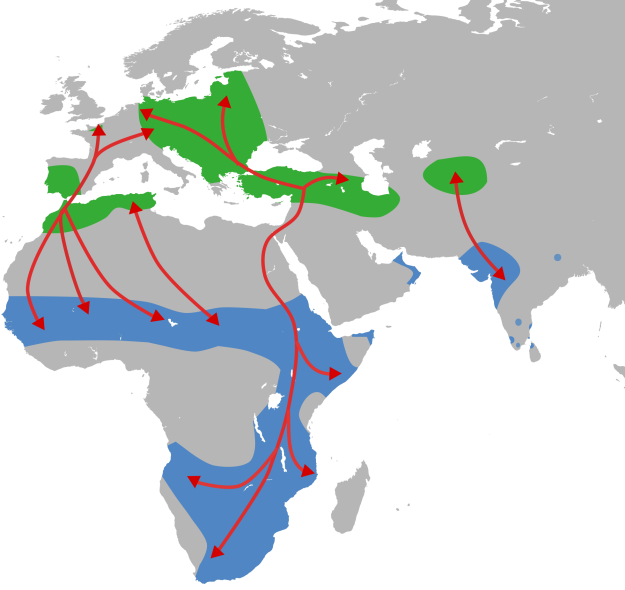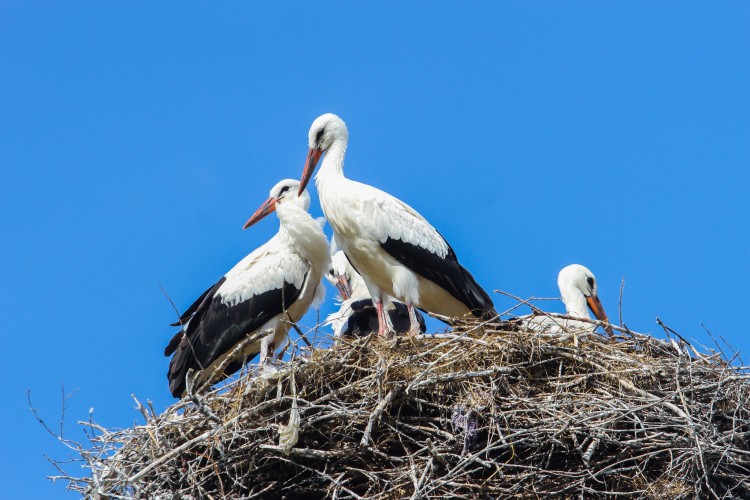Welcome the Birdorable White Stork: An Iconic Bird of the Old World

The White Stork is a majestic bird that's not only a symbol of luck and fidelity in many cultures but also a fascinating species that captivates bird enthusiasts and casual observers alike. With its striking white plumage, contrasting black wing feathers, and long red legs and beak, the White Stork is an amazing sight, whether it's seen gliding gracefully over open fields or standing tall among the wetlands.
Found across Europe, parts of Asia, and Africa, these birds are known for their impressive migratory journeys. White Storks will travel thousands of miles between their breeding grounds in Europe and their wintering areas in Africa, showcasing incredible endurance and navigational skills. These migrations are not only awe-inspiring but also critical for their survival, allowing them to exploit different ecosystems throughout the year.

🟩 = Breeding range; 🟦 = Winter range; 🟥 = Migration routes
One of the most endearing aspects of the White Stork is its nesting behavior. They are known for returning to the same nest year after year, with some nests being used for generations and becoming massive structures that can weigh up to several hundred kilograms. These nests are often located on rooftops, chimneys, or specially constructed platforms, making them a common and beloved sight in many European villages and towns. The storks' fidelity to their nesting sites and their partners, with whom they often reunite each breeding season, add a touch of romance to their image.
White Storks feed on a variety of prey, including insects, fish, amphibians, and small mammals, which they hunt in meadows, wetlands, and fields. Their presence in a region is often considered a sign of a healthy ecosystem, as they play a crucial role in controlling pest populations and cleaning up after other animals.
Despite their widespread appeal and significance, White Storks face threats from habitat destruction, pollution, and collisions with power lines. Conservation efforts, including the creation of artificial nesting platforms and the safeguarding of wetlands, have been implemented in various regions to help protect these birds. These initiatives have had positive impacts, leading to stable or increasing populations in many areas where the storks breed and winter.
The White Stork's ability to adapt to human environments, coupled with concerted conservation efforts, offers hope for this species' future. Their successful coexistence with humans is a testament to what can be achieved when communities come together to protect and cherish their natural heritage.

White Storks on a nest by Oleg Dubyna (CC BY-SA 2.0 DEED)









Comments
Leave a comment
Thank you!